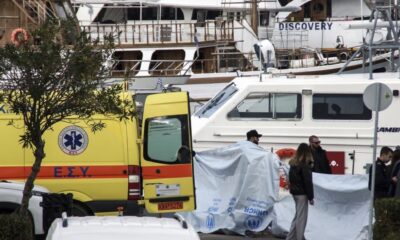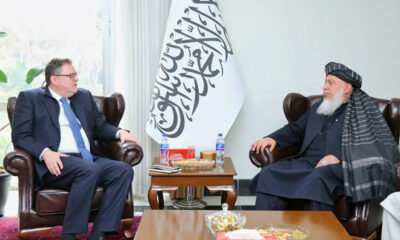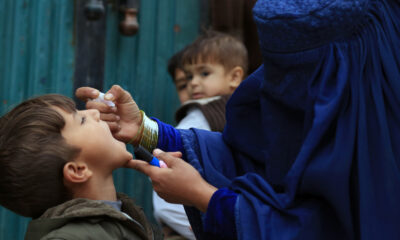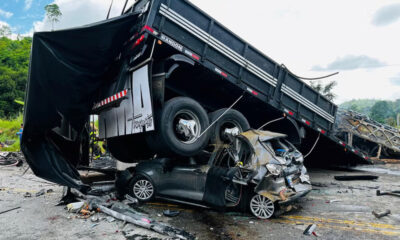World
At least 30 dead, many missing after dam bursts in eastern Sudan
Sudan’s dams, roads and bridges were already in disrepair before the war between the Sudanese army and the paramilitary Rapid Forces began in April 2023.
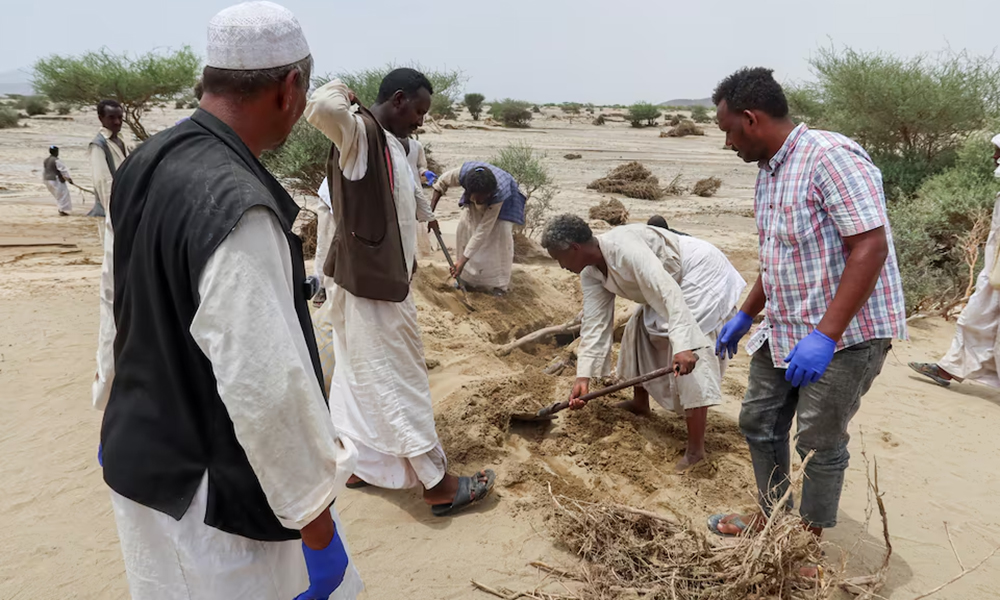
Surging waters have burst through a dam, wiped out at least 20 villages and left at least 30 people dead but probably many more in eastern Sudan, the United Nations said on Monday, devastating a region already reeling from months of civil war, Reuters reported.
Torrential rains caused floods that overwhelmed the Arbaat Dam on Sunday just 40 km (25 miles) north of Port Sudan, the de facto national capital and base for the government, diplomats, aid agencies and hundreds of thousands of displaced people.
"The area is unrecognisable. The electricity and water pipes are destroyed," Omar Eissa Haroun, head of the water authority for Red Sea state, said in a WhatsApp message to staff.
One first responder said that between 150 and 200 people were missing.
He said he had seen the bodies of gold miners and pieces of their equipment wrecked in the deluge, and likened the disaster to the devastation in the eastern Libyan city of Derna in September last year when storm waters burst dams, swept away buildings and killed thousands.
On the road to Arbaat on Monday a Reuters reporter saw people burying a man and covering his grave with driftwood to try to prevent it from being washed away in mudslides, read the report.
The homes of about 50,000 people were impacted by the flooding, the United Nations said, citing local authorities, adding that the number only accounted for the area west of the dam as the area east was inaccessible.
The dam was the main source of water for Port Sudan, which is home to the country's main Red Sea port and working airport, and receives most of the country's much-needed aid deliveries.
"The city is threatened with thirst in the coming days," the Sudanese Environmentalists Association said in a statement.
Officials said the dam had started crumbling and silt had been building during days of heavy rain that had come much earlier than usual.
Sudan's dams, roads and bridges were already in disrepair before the war between the Sudanese army and the paramilitary Rapid Forces began in April 2023.
Both sides have since funnelled the bulk of their resources into the conflict, leaving infrastructure badly neglected.
Some people had fled their flooded homes and headed to the mountains where they were now stranded, the health ministry said.
On Monday, the government's rainy season taskforce said 132 people had been killed in floods across the country, up from 68 two weeks ago. At least 118,000 people have been displaced by the rains this year, according to United Nations agencies, Reuters reported.
The conflict in Sudan began when competition between the army and the RSF, who had previously shared power after staging a coup, flared into open warfare.
The two sides had been seeking to protect their power and extensive economic interests as the international community promoted a plan for a transition towards civilian rule.
Overlapping efforts in pursuit of a ceasefire, including Saudi- and U.S.-led talks in Jeddah, have not eased the fighting and half of the 50 million population lack sufficient food.
World
More than 30 dead in Brazil bus and truck collision
The truck driver fled the scene, and three occupants of a car that collided with the truck and became trapped underneath survived the accident, said the fire department.
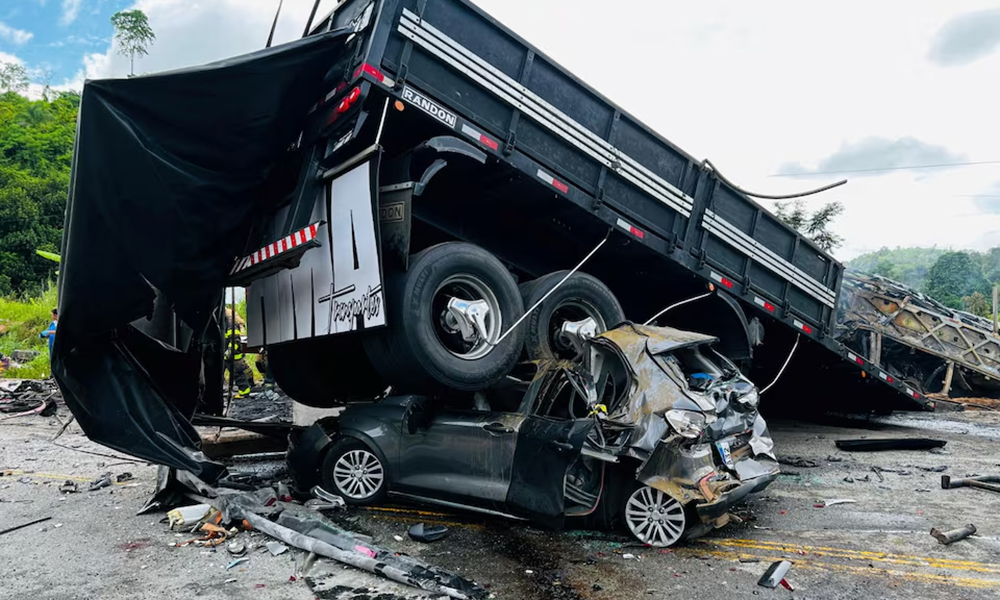
A packed bus collided with a truck and burst into flames early on Saturday in Brazil, killing more than 30 people, the fire department said.
After removing all of the victims from a major highway near the town of Teofilo Otoni in Minas Gerais, the state's fire department reported that of the 45 people on the bus, 38, including the bus driver, had been confirmed dead.
The other passengers remained in critical condition after being transported to a local hospital.
The truck driver fled the scene, and three occupants of a car that collided with the truck and became trapped underneath survived the accident, said the fire department.
President Luiz Inacio Lula da Silva stated on social media that the government was ready to provide whatever assistance was needed, and that the Federal Highway Policy was at the site.
"I deeply mourn and extend my prayers to the families of the more than 30 victims of the accident in Teofilo Otoni, Minas Gerais. I pray for the recovery of the survivors of this terrible tragedy," he wrote on X.
A forensic investigation will be required to determine the accident's cause, as differing accounts were gathered from witness testimonies, said the local fire department.
Initially, firefighters reported the bus had a tire blowout, causing the driver to lose control before colliding at around 4 a.m. local time, with an oncoming truck on the BR-116 federal highway, a major route connecting Brazil's densely populated southeast to the poorer northeast.
However, witnesses also reported that a granite block the truck was transporting came loose, fell on the road and caused the collision with the bus, said the fire department.
"Only the forensic investigation will confirm the true version," said the fire department in a statement.
The bus departed from Sao Paulo and was headed to the state of Bahia.
World
Biden approves $571 mln in defense support for Taiwan

U.S. President Joe Biden on Friday agreed to provide $571.3 million in defense support for Taiwan, the White House said, while the State Department approved the potential sale to the island of $265 million worth of military equipment.
The United States is bound by law to provide Chinese-claimed Taiwan with the means to defend itself despite the lack of formal diplomatic ties between Washington and Taipei, to the constant anger of Beijing, Reuters reported.
Democratically governed Taiwan rejects China's claims of sovereignty.
China has stepped up military pressure against Taiwan, including daily military activities near the island and two rounds of war games this year.
Taiwan went on alert last week in response to what it said was China's largest massing of naval forces in three decades around Taiwan and in the East and South China Seas.
Biden had delegated to the secretary of state the authority "to direct the drawdown of up to $571.3 million in defense articles and services of the Department of Defense, and military education and training, to provide assistance to Taiwan," the White House said in a statement without providing details.
Taiwan's defense ministry thanked the United States for its "firm security guarantee", saying in a statement the two sides would continue to work closely on security issues to ensure peace in the Taiwan Strait.
The Pentagon said the State Department had approved the potential sale to Taiwan of about $265 million worth of command, control, communications, and computer modernization equipment.
Taiwan's defense ministry said the equipment sale would help upgrade its command-and-control systems.
Taiwan's defense ministry also said on Saturday that the U.S. government had approved $30 million of parts for 76 mm autocannon, which it said would boost the island's capacity to counter China's "grey-zone" warfare.
World
Trump-backed spending deal fails in House, shutdown approaches

A spending bill backed by Donald Trump failed in the U.S. House of Representatives on Thursday as dozens of Republicans defied the president-elect, leaving Congress with no clear plan to avert a fast-approaching government shutdown that could disrupt Christmas travel.
The vote laid bare fault lines in Trump's Republican Party that could surface again next year when they control the White House and both chambers of Congress, Reuters reported.
Trump had pressured lawmakers to tie up loose ends before he takes office on Jan. 20, but members of the party's right flank refused to support a package that would increase spending and clear the way for a plan that would add trillions more to the federal government's $36 trillion in debt.
"I am absolutely sickened by a party that campaigns on fiscal responsibility and has the temerity to go to the American people and say you think this is fiscally responsible," said Republican Representative Chip Roy, one of 38 Republicans who voted against the bill.
The package failed by a vote of 174-235 just hours after it was hastily assembled by Republican leaders seeking to comply with Trump's demands. A prior bipartisan deal was scuttled after Trump and the world's richest person Elon Musk came out against it on Wednesday.
Republican House Speaker Mike Johnson provided no details when reporters asked him about next steps after the failed vote.
"We will come up with another solution," he said.
Government funding is due to expire at midnight on Friday. If lawmakers fail to extend that deadline, the U.S. government will begin a partial shutdown that would interrupt funding for everything from border enforcement to national parks and cut off paychecks for more than 2 million federal workers. The U.S. Transportation Security Administration warned that travelers during the busy holiday season could face long lines at airports.
"Congress must get rid of, or extend out to, perhaps, 2029, the ridiculous Debt Ceiling. Without this, we should never make a deal," Trump said in a post on Truth Social hours after the bill failed.
Thursday's unsuccessful bill largely resembled the earlier version that Musk and Trump had blasted as a wasteful giveaway to Democrats. It would have extended government funding into March and provided $100 billion in disaster relief and suspended the debt. Republicans dropped other elements that had been included in the original package, such as a pay raise for lawmakers and new rules for pharmacy benefit managers.
At Trump's urging, the new version also would have suspended limits on the national debt for two years -- a maneuver that would make it easier to pass the dramatic tax cuts he has promised.
Johnson before the vote told reporters that the package would avoid disruption, tie up loose ends and make it easier for lawmakers to cut spending by hundreds of billions of dollars when Trump takes office next year.
"Government is too big, it does too many things, and it does few things well," he said.
TEEING UP TAX CUT
Democrats blasted the bill as a cover for a budget-busting tax cut that would largely benefit wealthy backers such as Musk, the world's richest person, while saddling the country with trillions of dollars in additional debt.
"How dare you lecture America about fiscal responsibility, ever?" House Democratic Leader Hakeem Jeffries said during floor debate.
Even if the bill had passed the House, it would have faced long odds in the Senate, which is currently controlled by Democrats. The White House said Democratic President Joe Biden did not support it.
Previous fights over the debt ceiling have spooked financial markets, as a U.S. government default would send credit shocks around the world. The limit has been suspended under an agreement that technically expires on Jan. 1, though lawmakers likely will not have to tackle the issue before the spring.
When he returns to office, Trump aims to enact tax cuts that could reduce revenues by $8 trillion over 10 years, which would drive the debt higher without offsetting spending cuts. He has vowed not to reduce retirement and health benefits for seniors that make up a vast chunk of the budget and are projected to grow dramatically in the years to come.
The last government shutdown took place in December 2018 and January 2019 during Trump's first White House term.
The unrest also threatened to topple Johnson, a mild-mannered Louisianan who was thrust unexpectedly into the speaker's office last year after the party's right flank voted out then-Speaker Kevin McCarthy over a government funding bill. Johnson has repeatedly had to turn to Democrats for help in passing legislation when he has been unable to deliver the votes from his own party.
He tried the same maneuver on Thursday, but this time fell short.
Several Republicans said they would not vote for Johnson as speaker when Congress returns in January, potentially setting up another tumultuous leadership battle in the weeks before Trump takes office.
-
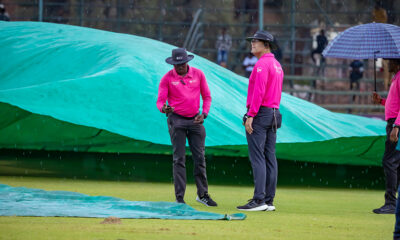
 Sport4 days ago
Sport4 days agoZimbabwe’s opening ODI against Afghanistan abandoned
-

 World3 days ago
World3 days agoNorth Korean troops suffer 100 deaths, struggling in drone warfare, South Korea says
-

 Latest News2 days ago
Latest News2 days agoAfghan men must stand with women to support viable future of country: US envoy
-
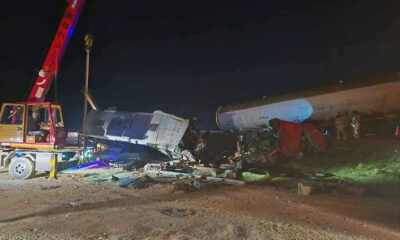
 Latest News3 days ago
Latest News3 days agoTwo horror accidents on Kabul-Kandahar highway leave 52 dead
-
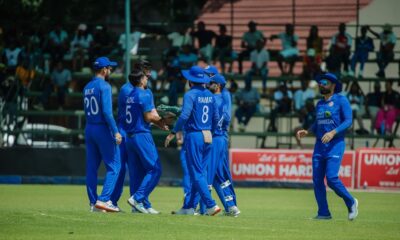
 Sport3 days ago
Sport3 days agoAfghanistan crush Zimbabwe by 232 runs in second ODI
-
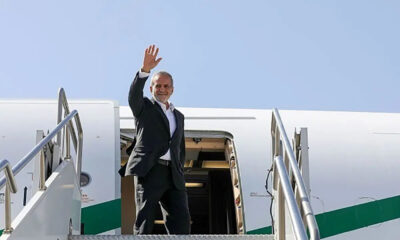
 Regional4 days ago
Regional4 days agoIran’s president to make rare visit to Egypt for D-8 summit
-

 International Sports4 days ago
International Sports4 days agoLanka T10: Kandy Bolts in at 4th spot in playoffs after thrilling day
-

 Tahawol5 days ago
Tahawol5 days agoTahawol: Latest developments in Syria reviewed






